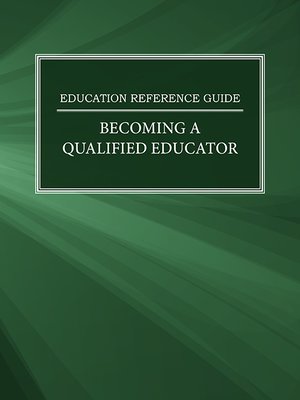
Sign up to save your library
With an OverDrive account, you can save your favorite libraries for at-a-glance information about availability. Find out more about OverDrive accounts.
Find this title in Libby, the library reading app by OverDrive.



Search for a digital library with this title
Title found at these libraries:
| Library Name | Distance |
|---|---|
| Loading... |
The volume begins with Tricia Smith’s overview of the No Child Left Behind Act and the essential criteria an educator
must possess in order to be considered “highly qualified.” At the very least, qualified teachers require a bachelor’s
degree in the subject taught, full state certification, and a solid demonstration of their knowledge and skills. The
evaluation process is especially crucial when determining a teacher’s competency, and as Sandra Myers discusses,
there are many testing methods and requirements of the No Child Left Behind Act that must be taken into account.
Evaluating the competence of a teacher is a process that is widely debated; however, Rebekah Painter explains that all
teachers must be able to meet certification and licensure requirements in order to be considered. Sometimes, schools
will employ unusual methods for assessing their instructors, such as teacher peer assessments, which allow colleagues
to assess each other’s instructional quality during performance appraisals. Myers introduces student evaluation of
teachers as a more controversial method of appraising teacher effectiveness. An even more controversial approach to
teacher appraisals is student evaluations, but having students rate their own instructors can be immensely beneficial,
as they are often both honest and constructive.







